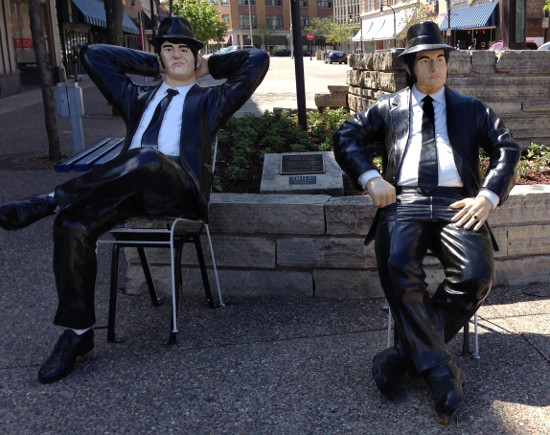
On May 2, the life-sized sculptures of the Blues Brothers were back on public display in the Rock Island District after months of storage and repairs. The sculptures are seated in chairs near the corner of Second Avenue and 18th Street.
On the same day, Watching the Ferry - a sculpture of two boys seated on a park bench - was unveiled at its new site in Davenport's Lindsay Park near the riverfront. This sculpture had been out of public view for five years, since its removal from near the Iowa American Water treatment plant when construction began on a floodwall.
Although the timing was a coincidence, the two sculptures share some similarities. Both depict two young men seated side-by-side and convey a sense of camaraderie. Both look to a past associated with the Quad Cities. Both are based on works in other media: television and film with the Blues Brothers and a lithograph with Watching the Ferry.
A comparison between the two pieces is intriguing because of this difference in their sources - as well as in their attitudes, materials, and locations.